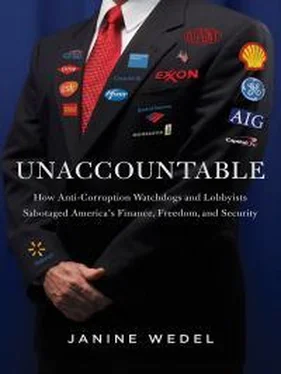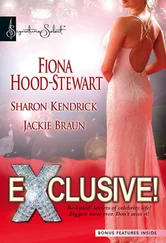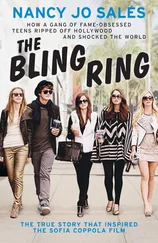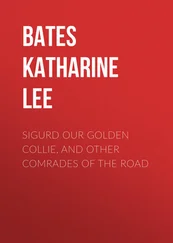71. Ken Thomas and Nedra Pickler, “Obama to Speak to Organizing For Action Summit.” AP, March 11, 2013 (http://bigstory.ap.org/article/obama-speak-organizing-action-summit).
72. Jim Messina, “Why we’re raising money to support Obama agenda.” CNN, March 7, 2013 (http://www.cnn.com/2013/03/07/opinion/messina-organizing-for-action/).
73. J. Gerald Hebert and Fred Wertheimer, “Letter to President Obama about OFA.” Democracy 21 and Campaign Legal Center, March 13, 2013 (http://www.democracy21.org/wp-content/uploads/2013/03/OFA-LETTER-3-13-131.pdf). See also Justin Sink, “Watchdog: Obama should abandon OFA,” The Hill, March 11, 2014 (http://thehill.com/blogs/blog-briefing-room/200446-watchdog-obama-should-abandon-ofa).
74. Alex Rogers, “Obama’s Grassroots Moneybags: The Top 19 Organizing for Action Donors.” Time, November 11, 2013 (http://swampland.time.com/2013/11/11/obamas-grassroots-moneybags-the-top-19-organizing-for-action-donors/).
75. Michael Isikoff, “Pro-Obama Group Fires Fundraiser Who Diverted Felon’s $100K Gift.” NBC News, February 28, 2014 (http://www.nbcnews.com/news/investigations/pro-obama-group-fires-fundraiser-who-diverted-felons-100k-gift-n39491).
76. Ibid.
77. Ibid.
78. Isikoff, op. cit.
79. Matea Gold, “Koch-backed coalition, designed to shield donors, raised $400 million in 2012.” Washington Post, January 5, 2014 (http://www.washingtonpost.com/politics/koch-backed-political-network-built-to-shield-donors-raised-400-million-in-2012-elections/2014/01/05/9e7cfd9a-719b-11e3-9389-09ef9944065e_story.html).
80. Teneo Holdings (http://www.teneoholdings.com/).
81. Nicholas Confessore and Amy Chozick, “Unease at Clinton Foundation Over Finances and Ambitions.” New York Times, August 13, 2013 (http://www.nytimes.com/2013/08/14/us/politics/unease-at-clinton-foundation-over-finances-and-ambitions.html?pagewanted=all).
82. Alec MacGillis, “Scandal at Clinton Inc.: How Doug Band drove a wedge through a political dynasty.” New Republic, September 22, 2013 (http://www.newrepublic.com/article/114790/how-doug-band-drove-wedge-through-clinton-dynasty).
83. Ibid.
84. Ibid.
85. Josh Margolin, “Jon-Bubba Twist.” New York Post, December 6, 2011 (http://nypost.com/2011/12/06/jon-bubba-twist/).
86. Alec MacGillis, “Scandal at Clinton Inc.: How Doug Band drove a wedge through a political dynasty.” New Republic , September 22, 2013 (http://www.newrepublic.com/article/114790/how-doug-band-drove-wedge-through-clinton-dynasty).
87. Rosalind S. Helderman, “For Hillary Clinton and Boeing, a beneficial relationship.” Washington Post, April 13, 2014 (http://www.washingtonpost.com/politics/for-hillary-clinton-and-boeing-a-beneficial-relationship/2014/04/13/21fe84ec-bc09-11e3-96ae-f2c36d2b1245_story.html).
88. Robert Mendick, “Blair Inc: How Tony Blair makes his fortune.” Telegraph, January 7, 2012 (http://www.telegraph.co.uk/news/politics/tony-blair/8999847/Blair-Inc-How-Tony-Blair-makes-his-fortune.html).
89. The Office of Tony Blair (http://www.tonyblairoffice.org/pages/what-we-do2/).
90. “In the Stirrups of Time” (http://www.youtube.com/watch?feature=player_detailpage&v=xaWWw1lwwpE#t=118s); Ken Silverstein, “Buckraking Around the World with Tony Blair.” New Republic, September 14, 2012 (http://www.newrepublic.com/article/politics/magazine/107248/buckraking-around-the-world-tony-blair).
91. Peter Oborne, “On the desert trail of Tony Blair’s millions.” The Telegraph, September 23, 2011 (http://www.telegraph.co.uk/news/politics/tony-blair/8784596/On-the-desert-trail-of-Tony-Blairs-millions.html).
92. Jacob Heilbrunn, “Why Did Tony Blair Become a Pal of Col. Qaddafi’s?” National Interest, September 25, 2011 (http://nationalinterest.org/blog/jacob-heilbrunn/tony-blairs-closest-business-partner-col-gadaffi-5931).
93. Robert Mendick, “Blair Inc: How Tony Blair makes his fortune.” The Telegraph, January 7, 2012 (http://www.telegraph.co.uk/news/politics/tony-blair/8999847/Blair-Inc-How-Tony-Blair-makes-his-fortune.html).
94. Lionel Barber, “Tony Blair: an exclusive interview.” Financial Times , June 29, 2012 (http://www.ft.com/intl/cms/s/2/b2ec4fd6-c0af-11e1-9372-00144feabdc0.html#axzz2xG51kTVW).
95. Mendick, op. cit.
CHAPTER 10
1. Don Kash, a scholar in the field of technological innovation, puts it thusly: “Culture shock is what happens when you go into another culture and you don’t know what the rules are. What’s future shock? . . . Future shock is when you get up and open the door to a technology that changes the rules of the game and you close the door, but it is distinct from culture shock because you can never go home. You can never go back to the place where you know the rules.” The author of Future Shock is Alvin Toffler (New York: Random House, 1970). The passage is from Don Kash, “The Role of Culture in Organizational-Technological Change,” Lecture at George Mason University, November 17, 2004.
2. This was the slogan of their 2009 documentary The Yes Men Fix the World .
3. For the background on the chemical spill, see, for example: BaoBao Zhang, “The Bhopal Disaster.” PBS, June 8, 2010 (http://www.pbs.org/wnet/need-to-know/five-things/the-bhopal-disaster/1316/); Editors , “Indian government seeks double compensation payout for Bhopal disaster.” Telegraph, December 3, 201 (http://www.telegraph.co.uk/news/worldnews/asia/india/8179365/Indian-government-seeks-double-compensation-payout-for-Bhopal-disaster.html); Prasenjit Bhattacharya, “Court Rules Union Carbide Not Liable in Bhopal Case.” Wall Street Journal, June 28, 2012 (http://online.wsj.com/news/articles/SB10001424052702303561504577493642502980690); and Bhopal Information Center, “U.S. Court of Appeals Upholds 2012 Judgement of District Court in Bhopal Case; Union Carbide Not Responsible for Pollution-Related, Personal Injury Claims.” Bhopal Information Center (http://www.bhopal.com/court-of-appeals-upholds-2012-judgment).
4. Here’s the story from the Yes Men website: The Yes Men, “Dow Does the Right Thing” (http://theyesmen.org/hijinks/bbcbhopal). Yes Men hoax interview (http://www.youtube.com/watch?v=I1vhS26GoEY). Apparently Dow Chemical paid a company to monitor the Yes Men (http://wikileaks.org/gifiles/docs/38/388134_yes-men-monitoring-03-25-11-.html).
5. The Museum of Hoaxes, “The Yes Men’s Bhopal Hoax, 2004” (http://www.museumofhoaxes.com/hoax/archive/permalink/the_yes_mens_bhopal_hoax).
6. David Montgomery, “Occupy Wall Street takes lessons from The Yes Men.” Washington Post, October 20, 2011 (http://www.washingtonpost.com/lifestyle/style/the-yes-men-use-humor-to-attack-corporate-greed/2011/09/28/gIQACyJg0L_story.html).
7. Dominic Boyer and Alexei Yurchak, “American Stiob: Or, What Late-Socialist Aesthetics of Parody Reveal about Contemporary Political Culture in the West.” Cultural Anthropology , vol. 25, issue 2, 2010, p. 212.
8. In the 1980s, the goal of refashioning the state in the image of the private sector motivated the migration of audits from their original association with financial management to other areas of working life.
9. As I explained in an endnote in Chapter 1, Dubnick establishes that the English “accountability” has a traditional meaning, plus a more recent usage that came into prominence in the 1980s. He argues that what distinguishes the traditional “accountability” notion from other governance solutions is that it depends on the existence of a “moral community.” The traditional notion of accountability is a primary characteristic of governance in contexts where there is agreement about the legitimacy of expectations among community members. Dubnick writes that “Conceptually, accountabilityc [the traditional concept] can thus be regarded as a form of governance that depends on the dynamic social interactions and mechanisms created within of [sic] such a moral community ” (Melvin J. Dubnick, “Seeking Salvation for Accountability.” Paper presented at the annual meeting of the American Political Science Association, August 29-September 1, 2002, pp. 6-7 [emphasis in original] [http://pubpages.unh.edu/dubnick/papers/salv2002.htm].)
Читать дальше












